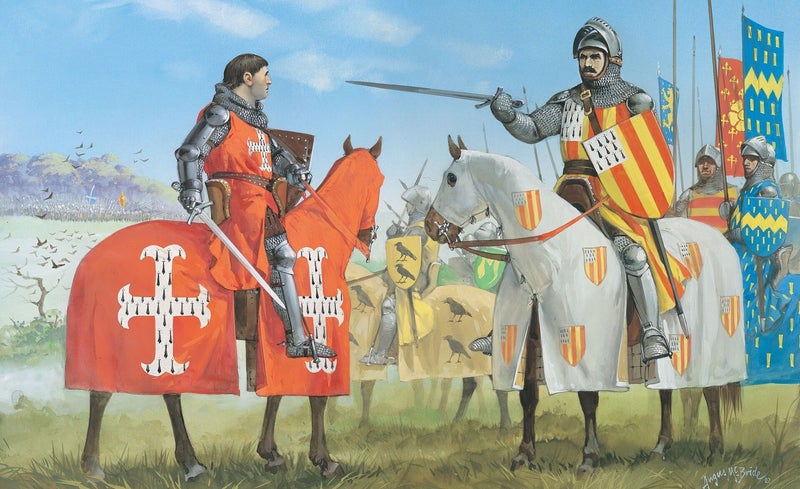
Edward I was a warrior king
During the 13th Century, he had subdued the difficult Welsh and imposed his power on them by building strong fortresses throughout Wales.
The Scots proved a little more troublesome: despite having asked for Edward's decision on who should succeed Alexander III, his choice of John Balliol was not popular in Scotland, and in 1295 the Scots signed a mutual aid treaty with France (known as the Auld Alliance). This pact with Edward's enemy brought about swift retaliation from the King. Edward destroyed Berwick, slaughtering thousands of the town's inhabitants, before pushing deeper into Scotland.
The Scots' army met Edward in battle at Dunbar, but was decisively beaten. The English King stripped the country of its treasures and symbolic icons of nationhood, as easily as he stripped Balliol of his status as king. Most notably the crown jewels and the Stone of Destiny were removed to be sent back to England. The message was clear – there was to be no other king in Scotland but Edward; however, within a year rebellions were led by Andrew Murray in the north and William Wallace in the south of the country.
Edward left the matter of crushing this new rebellion to his representative, John de Warenne, as he personally was busy in France; but at Stirling Bridge de Warenne's force was routed by Wallace and Murray's army.
So it was that Edward marched north to Newcastle in June 1298 with a huge new army: crossbowmen from Gascony and Welsh archers, along with foot soldiers from Ireland. Eight earls had joined Edward at York, each bringing along his own large contingent of experienced knights and infantry, swelling Edward’s ranks by several thousand men.
On 3 July, he invaded Scotland, setting up camp at Linlithgow. Supplies were brought from Carlisle and from ships along the eastern coast of Scotland; but the rebels held vital castles on the route. Thus it was that Antony Bek, Bishop of Durham, led his own large contingent of 140 knights and 1,000 foot soldiers, raised from the Palatinate of Durham, to attack the castles of Yester, North Berwick and Dirleton. They held out; and in the meantime, Edward moved to confront Wallace's forces at Falkirk. Here, Bek's military acumen proved vital in curtailing the headlong instincts of some of the English knights, and, ultimately, the use of the longbow proved pivotal, annihilating the unprotected Scottish schiltrons of pikemen.
...Freed up after his part in the success at Falkirk, Bishop Bek returns to Dirleton. He now has larger siege engines available, and more troops; but the de Vaux family, who own the castle, continue to stubbornly resist. Edward is losing patience, and will visit himself to oversee progress.
The de Vauxs were once staunch allies of King Edward, and in an attempt to win them around to peaceful surrender, Antony Bek offers them a "tournament a plaisance" outside the castle walls: individual battle and melees, but not to the death.
Will this ploy bring about their capitulation...will it allay Edward's ire...and who will win the day?
It remains to be seen.

Artist Graham Turner